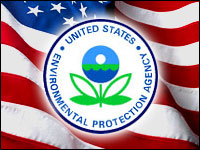
The Environmental Protection Agency (EPA) and the U.S. Army Corps of Engineers have issued new joint guidance for their field offices for the protection of wetlands and bodies of water that are protected under the Clean Water Act.
The new guidelines come in the wake of last year’s Supreme Court decision over the identification of wetlands, streams and rivers that are subject to the Clean Water Act. The decision of two consolidated cases, Rapanos v. United States and Carabell v. United States, has sparked criticism for not clearly specifying which waters are subject to EPA and Army Corps protection.
While non-navigable waters, streams and many wetlands may still be managed by the EPA and Army Corps, the agencies’ jurisdiction may need to be decided on a case-by-case basis in lower courts.
Hampered by Decision?
As for the Army Corps and EPA, the organizations issued the guidelines with public statements on President Bush’s intent to protect existing wetlands and bodies of water — while noting the Clean Water Act and the Supreme Court decision.
“We are committed to protecting America’s aquatic resources under the Clean Water Act and in accordance with the recent Supreme Court decision,” said John Paul Woodley Jr., assistant secretary of the Army, civil works. “This interagency guidance will enable the agencies to make clear, consistent and predictable jurisdictional determinations. The results, once posted on agency Web sites, will document how the scope of the Clean Water Act jurisdiction is being determined.”
The Bush Administration supports a policy of no net loss of wetlands, which is one of three key elements to the Bush Administration wetlands policy, the EPA reports. The other two elements include an active management program that will result in the restoration, enhancement and protection of three million acres of wetlands by 2009 and a commitment to conserve isolated wetlands such as prairie potholes.
“The Bush Administration is committed to protecting wetlands and streams under the Clean Water Act and Supreme Court decisions,” said Benjamin H. Grumbles, EPA’s assistant administrator for Water. “We’ll use our regulatory tools to meet the president’s ambitious wetlands goals.”
Up In the Air
These new guidelines, however, are not business-as-usual, and it’s difficult to say whether previously covered wetlands and watersheds will receive the same levels of protection. Either way, the new guidelines have critics.
“We’re really disappointed with the new guidelines,” Julie Sibbing, senior program manager for wetlands and agriculture policy for the National Wildlife Federation, told TechNewsWorld. “The court decision itself left some opening for interpretation, but it seems like the [Bush] administration took every opportunity to retreat from protection in any possible way they could, and we think they retreated unacceptably, even according to what the Rapanos decision said.”
Furthermore, the new guidance leads to new procedures where individual streams or ponds would be isolated in the decision-making process, meaning that a single headwater stream would have to have an adverse effect on a larger body of water, Sibbing said. While possible to prove that a headwater stream could affect the Mississippi River, for example, the new guidelines reduce the likelihood of that determination.
The combined effects of several watersheds, for example, could possibly be ignored, which can be critical to the evaluation of environmental problems. Hypoxia, for example, is a condition in which aquatic environments lose dissolved oxygen that can lead to the mass death of fish and other aquatic organisms. Pollution entering a body of water from a single stream, for example, might not lead directly to hypoxia, but pollution entering multiple streams could possibly lead to downstream hypoxia.
“With wetlands, you have thousands of little wetlands in the Prairie Pothole Region. Sure, if you fill one in, it’s not going to devastate duck populations,” Sibbing explained. “But if you fill thousands of them in, one at a time, it is going to have devastating impacts. They just don’t seem to want to take that concept on.”
New Legislation
“The Administration’s so-called guidance has done little to unmuddy the water,” said Bob Perciasepe, COO for Audubon and a critic of the new guidelines. “The only real solution is legislation. A perfect storm of government ambivalence, aggressive polluter activism and a split Supreme Court have subverted the original intent of the Clean Water Act and make it vital that Congress fix the problem.”
A handful of concerned members of Congress have introduced a new bill, the Clean Water Authority Restoration Act, which, if passed, could clarify the scope of the Clean Water Act to ensure the protection of watersheds.




















































